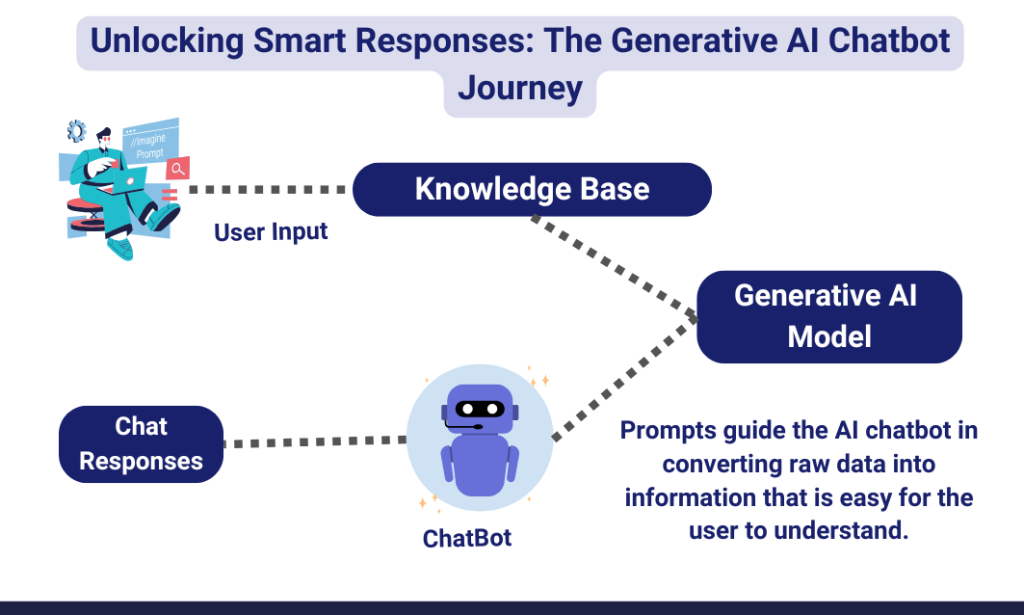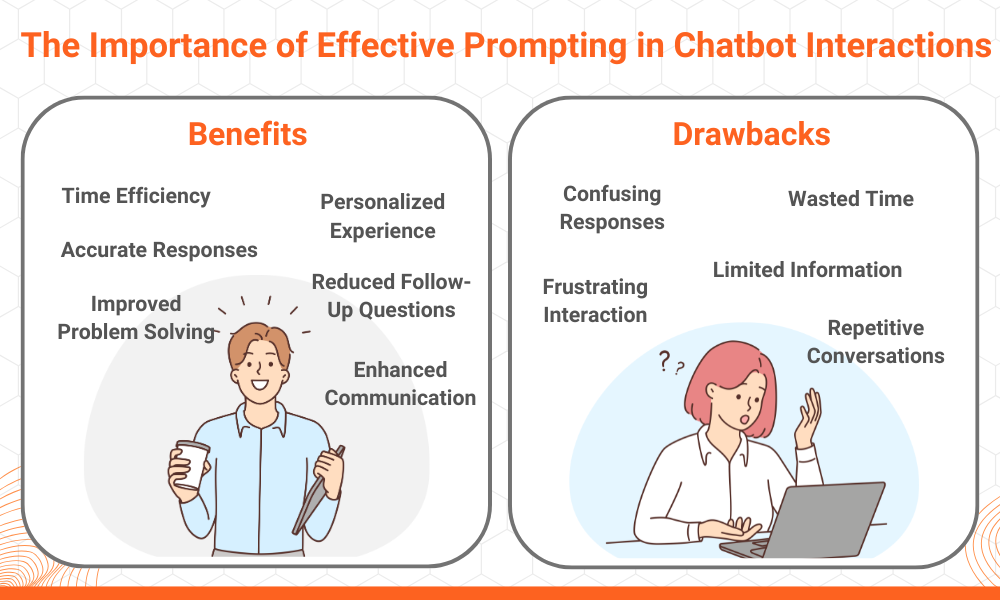Elevating AI Systems with Precision Prompt Engineering
.svg)
Table of Contents
Introduction
Prompt Engineering is the practice of crafting and refining instructions, known as “prompts,” given to AI models to generate accurate and contextually relevant responses. Effective prompt design enhances the performance, accuracy, and usability of AI systems. Moreover, this process involves iteratively tweaking prompts to ensure the AI’s understanding of queries improves, leading to better, more meaningful results.
Role of Prompt Engineering in a RAG Chatbot
Prompt engineering plays a critical role in the performance of a Retrieval-Augmented Generation (RAG) chatbot. In this type of chatbot, well-crafted prompts shape how the AI interprets user queries, retrieves relevant information from a knowledge base, and generates useful, accurate responses. For example, the AGrid chatbot relies on prompt engineering to:
- Improve Query Interpretation: By refining prompts, the chatbot accurately understands the user’s intent and context.
- Guide Response Generation: Prompts help the chatbot produce clear, relevant responses tailored to the user’s role—whether they’re an Admin, Developer, or Business User.
- Optimize Data Retrieval: In RAG systems, prompts help fine-tune data retrieval, ensuring that the most relevant information is pulled from the knowledge base and reducing the likelihood of errors.
- Enhance Personalization: Prompts enable the chatbot to adapt responses based on the user’s persona (e.g., Admin or Consultant), creating a more engaging and personalized experience.
- Assist with Troubleshooting and Configuration: Prompts guide the chatbot to identify key elements needed for configuration or troubleshooting, offering users step-by-step assistance.

Importance of Prompt Engineering in the RAG Chatbot
It is essential for ensuring accuracy, user satisfaction, and handling complex queries. Its importance is highlighted in several ways:
- Accuracy and Precision: Thoughtfully designed prompts ensure that the chatbot retrieves the most relevant data from the knowledge base, leading to precise and actionable responses.
- Boosting User Satisfaction: Incorporating clarifying prompts minimizes confusion and boosts user engagement and satisfaction.
- Handling Complex Configurations: It helps manage detailed queries by breaking tasks into clear steps, especially for complex Salesforce-based configurations like AGrid product.
- Maintaining Contextual Awareness: Prompt engineering helps the chatbot retain context during multi-step interactions, ensuring it asks follow-up questions and avoids missing key details.
- Efficient Escalation: When the chatbot can’t resolve an issue, prompt engineering ensures smooth escalation by guiding when and how to pass the query to human support.

Handling Negative Use Cases in Prompt Engineering
While prompt engineering is focused on generating accurate, helpful responses, it’s equally important to consider scenarios where the chatbot must handle negative use cases—instances where the system needs to deny a request or provide a “no” response. Well-crafted prompts prevent user frustration and ensure clear communication about system limitations.
If you’re interested in learning how to effectively manage negative use cases, check out our dedicated blog on this topic: Handling Negative Use Cases in Prompt Engineering, where we explore strategies and best practices in depth.
Best Practices for Effective Prompt Engineering
Developing successful AI systems and chatbots through prompt engineering involves several critical considerations:
- Iterative Refinement: Perfecting a prompt is often a process of trial and error. Constantly refining prompts based on the chatbot’s performance and user feedback is key to long-term success.
- Adaptability: Prompts need to be flexible to accommodate various user roles and query types. For example, a troubleshooting query from an Admin requires a different approach than a configuration query from a Developer.
- Natural Language Understanding: Designing prompts that enable the AI to interpret and respond in a human-like, natural language is vital for a user-friendly experience.
- Clarification Mechanisms: Including prompts that ask clarifying questions when the chatbot doesn’t fully understand a query improves response accuracy and ensures users provide the necessary information.
Conclusion
Prompt engineering drives the success of AI-powered systems like the AGrid RAG chatbot. This is fundamental to the success of AI-powered systems like the AGrid (link) RAG chatbot. Refined prompts help the chatbot understand user intent and context. As a result, query interpretation, response generation, data retrieval, and personalization for Admins, Developers, or Business Users improve.
This approach not only enhances the chatbot’s accuracy and efficiency but also improves user satisfaction by providing relevant and timely interactions. As AI systems continue to evolve, prompt engineering remains an essential aspect of their development, driving smarter, more intuitive user experiences.
Stay tuned for our upcoming blogs:
- Building a Product Chatbot: Learn how to design effective, user-friendly chatbots that align with your product goals.
- Do’s and Don’ts for Product Chatbots: A guide to maximizing your chatbot’s potential while avoiding common pitfalls.





